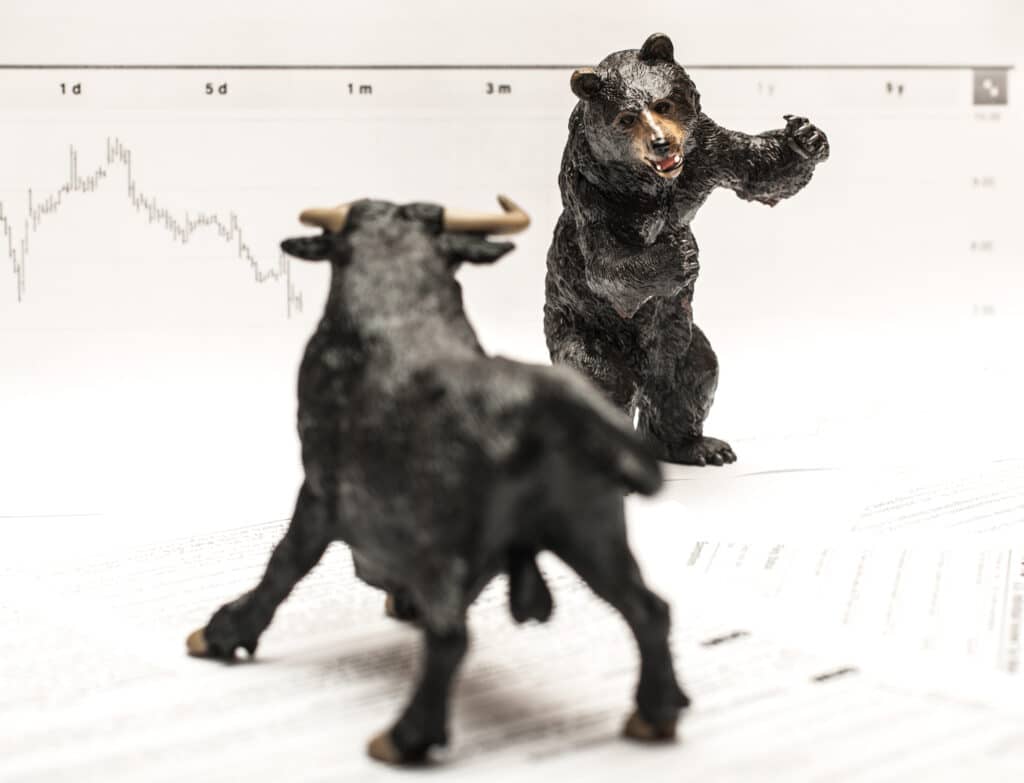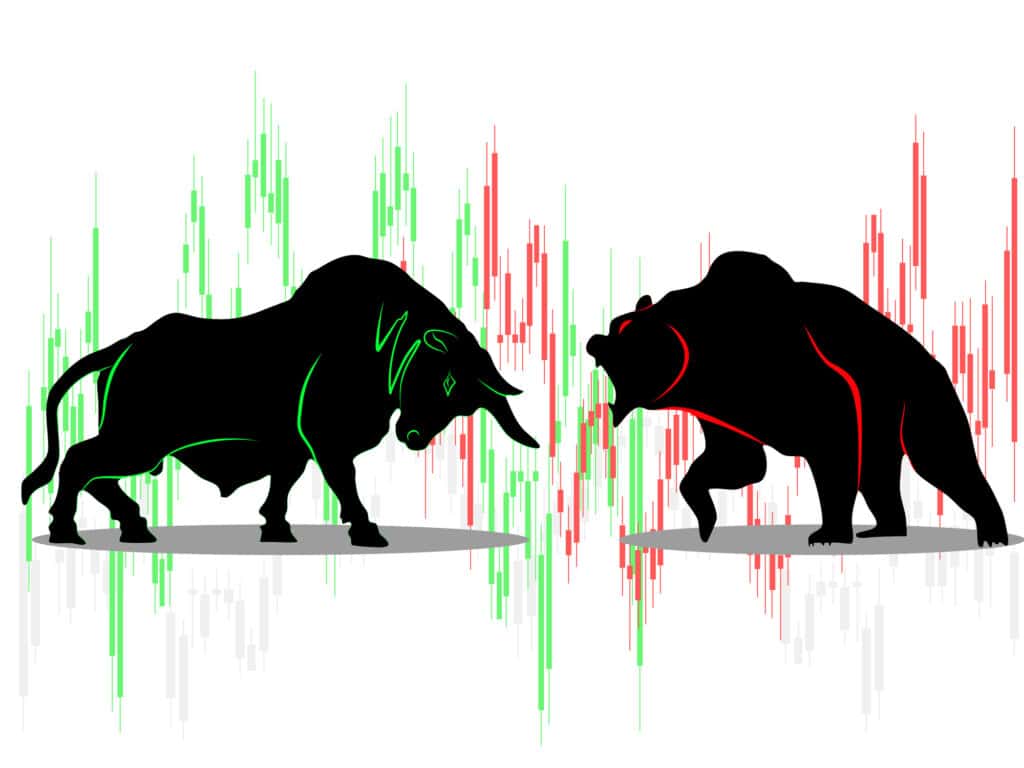What Does It Mean to Be Bullish or Bearish in Crypto Trading?

Cryptocurrencies, Trading
Since the pandemic, the cryptocurrency market has become one of the most profitable markets, making crypto trading a popular choice for beginners. However, most beginners are not familiar with the market or crypto jargon, which leaves them wondering what things mean.
For instance, you may have heard the terms "bullish" or "bearish" in a market conversation, or perhaps you have read it on a news headline. These terms may have you thinking about the animals, but they have nothing to do with animals.
Let's discuss these two prevalent terms and explain what it means to be bullish or bearish in crypto trading, so you have a better understanding of market sentiment and trader outlook.

What Does It Mean to Be Bullish or Bearish in Crypto Trading?
Whether discussing the crypto market, asset, or any other investment market or asset, the terms bullish and bearish retain their meanings.
The terms "bullish" and "bearish" refer to opposite market sentiments, as perceived or spoken by an individual or a collective of stakeholders or audiences. A " bullish " person has a positive outlook on a crypto asset or the market and expects the price to rise.
Such individuals are usually called "bulls." On the other hand, a " bearish " person has a negative outlook on a crypto asset or the market and expects the price to drop. A "bear" or "bears" expect the concerned crypto asset or the market to fall in value.
Investors and traders use the terms bullish or bearish to quickly describe their market sentiment regarding a specific cryptocurrency, crypto asset, or the crypto market as a whole. As mentioned previously, these terms come from the mainstream market and are not limited to crypto trading.
Why The Animal Terminology?
There is no definitive answer for why these terms include these animals. However, most people believe it has to do with how these animals attack their opponents. Bulls, for example, attack opponents using their horns to thrust them up in the air.
Bears attack their opponents by swiping their heavy arms down on them. These opposing attacking techniques are thought to be metaphorically linked to the market's movement or an asset's price.
The answer possibly lies in the way the two animals attack their prey. Bulls attack upward, driving their horns up through their target. On the other hand, bears start high and attack downward with their weight and arms.
This is just one popular explanation, and there are plenty of others you may hear from various sources. However, the actual origins and authors of the terms are unclear. Bullish is described as working towards or being hopeful about prices rising in the stock market
Bearish is described as fearful of falling stock prices, and all actions motivated by this fear are also deemed bearish. Both definitions refer to a bullish and bearish investor or trader, respectively.

Which Market Sentiment Is Better?
Why people and stakeholders are bullish or bearish depends on different factors. Typically, however, most crypto traders don't care too much about whether a crypto asset or the crypto market is bullish or bearish. They are mostly indifferent, as long as they can buy and sell (trade) in both directions.
This is known as "going long and short," where traders "go long" (buy) when they are bullish about a crypto asset or "go short" (sell) when they are bearish. Since traders buy and sell assets more frequently than investors, they use shorter time intervals to make their trades, meaning market sentiment is only a matter of going long or short.
They don't care for the crypto market or any particular crypto asset to go up or down in value. Instead, they care about whether they accurately predict the market or an asset to go up or down. This allows them to profit on their bullish and bearish outlooks of an asset or the market.
Naturally, other things like their crypto trading strategy also play a role in determining which market or asset condition is more favorable for them. Alternatively, investors hold on to crypto assets for longer than traders, which means they may prefer bullish assets and markets.
Investors may have a long-term approach, but they can still sell if they feel bearish about an asset. This way, they can buy back the asset when it bottoms out. Realistically, shorting crypto assets like this can only give you a maximum profit of 100 percent if you short at the peak value of the asset and ride it all the way to zero.
However, going long has unlimited profit potential for investors because an asset may rise much more than 100 percent in value. Ultimately, even when a crypto investor is bullish on the overall crypto market, they can still enter a short trade on a bearish asset and profit from its drop in value.
All possibilities can have a profitable outcome in crypto trading if you make the right predictions. For example, someone can be bullish in the long run but bearish in the short term. This person may expect a crypto asset to drop temporarily (hours, days, or weeks) before returning to an upward trajectory for the long run.
Someone with such a market sentiment would ideally "buy the dip" to make a sizeable profit. The opposite situation may also hold value. For example, if someone is bullish in the short-term and bearish in the long run, they may expect a temporary rise in value. This rise is due to the rising popularity of the asset, hype, or an influx of investors.
They may buy such an asset in the short term to sell it at a higher price before it drops down again. This could happen for many reasons like market bubbles, media hype, or "pump-and-dump" schemes.
All this is to say that bullish and bearish market sentiments or assets can be profitable for traders and investors. However, bullish is usually more profitable than bearish. Despite the mentioned examples, you must understand that "short-term" and "long-term" views are always subjective and vary from time to time and person to person.

Conclusion
Experts of crypto trading will always have bullish or bearish outlooks on the crypto market as a whole. Assets are no different. However, the market sentiment of a crypto asset can be based on many factors.
It could be because of recent positive or negative news announcements, scandals, chart trends, taxes, policies, regulations, or even external factors like regional or global issues. Market sentiments of a crypto asset or cryptocurrency can be bullish or bearish, depending on its perceived probability to rise or fall in value, respectively.
For example, most people, including crypto experts, are bullish about bitcoin in the long run, whereas others see it as a bubble, which is why they are bearish about it in the long run.
Despite what others think or say, factors like opinions, timeframes, events, perspectives, and trends can all impact an individual's outlook on a crypto asset or the market. At the end of the day, it is always better to practice comprehensive research to form your personal opinion instead of leaning on market sentiment.



